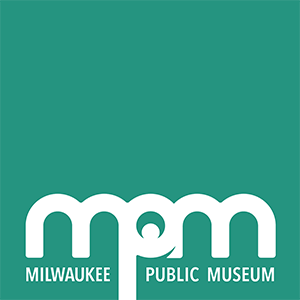3 Rivers Powwow
Presented by Milwaukee Public Museum with support from Potawatomi Casino Hotel
Join us as we kick off Native American Heritage Month with a powwow celebrating Indigenous cultures through song and dance!
This event is FREE and open to the public.
The first annual 3 Rivers Powwow will showcase various dance styles to songs shared from different drum groups from Wisconsin. Attend the Grand Entry at noon, shop for arts and crafts by Native artisans and visit a variety of resource tables.
DATE AND TIME
Saturday, November 1, 2025
Doors open 10:30 a.m., powwow noon-7 p.m.*
LOCATION
Second Floor, Milwaukee Public Museum
COST AND RESERVATIONS
FREE and open to the public
*Visitors are invited to explore the Museum’s other exhibit floors at no cost, which will be open 10 a.m.-5 p.m. Only the Second Floor’s exhibits will be open until 7 p.m.
DANCE SPECIALS
Men’s 18+ ($100/$75/$40)
Women’s 18+ ($100/$75/$40)
Youth ($40, $30, $20)
Street Clothes Special ($50/$50/ $20)
Dancers in full regalia that register will receive an honorarium. Registration will take place on site the day of the event prior to the Grand Entry.
For more information, please email 3 Rivers Powwow organizer and MPM's Manager of Tribal Relations James Flores (Oneida Nation): floresj@mpm.edu.
ADDITIONAL RESOURCES
Interested in learning more about powwows? Check out the below key terms and etiquette guide to familiarize yourself with this Native American celebration.
What is a powwow?
A powwow is a social gathering that celebrates Native American culture and history through song and dance. Everyone’s welcome to attend a powwow! They’re open to the public and a great opportunity to reconnect with old friends and make new ones, try Native American food, support Native American artists by purchasing arts and crafts, enjoy different styles of dancing, and listen to live singing from different drum groups.
Key terms you’ll hear at a powwow:
- Grand Entry - This is when dancers will line up by category to start the powwow. During Grand Entry, dancers are led in by veterans carrying various flags and eagle staffs.
- Regalia - This term is used to describe the outfits worn by dancers at powwows. Using the word “costume” to describe this type of clothing is considered offensive and should not be used. If you want to compliment a dancer, just say “Nice regalia!” or “I really like your outfit!”
- Categories - Different dance styles seen at powwows are called categories. Each category is unique and has its own fundamental movements and history.
Men’s Categories
- Grass Dancers – Dancers wear vibrant colors of yarn and cut fabric to simulate prairie grass. Their dance movements mimic steps that would be seen in knocking down tall grass.
- Northern Traditional – Dancers wear a U-shaped eagle bustle on their lower back. Their movement tells a story of hunting or fighting an enemy.
- Woodland Dancers – This style of dance originated in the Great Lakes region. The songs for this category are usually at a faster tempo. These dancers will often wear otter turbans with floral patterns seen on their regalia.
- Chicken Dancers – Dancers depict movements of a prairie chicken and wear a smaller, circular bustle.
- Men Fancy Dancers – These dancers wear two U-shaped bustles on their back and dance to fast tempo drumbeats displaying fast spins and footwork.
Women’s Categories
- Jingle Dress – Dancers wear dresses adorned with cones, also known as a healing dress; their footwork is poised and elegant.
- Fancy Shawl Dancers – Dancers wear a shawl over their shoulders and display intricate footwork while they move their arms gracefully with their shawl.
- Women’s Traditional – Dancers in this category wear traditional attire and move to the beat either with a slight step or bounce on the outside edge of the powwow circle. There are many styles of women’s traditional regalia.
- Applique Dancers - Similar to women’s traditional, women move elegantly to the drum beat and wear dresses that display intricate applique patterns.
Specials
These dances are at designated times when dancers compete for prize money.
Intertribals
These are dances open to anyone to come out and dance. You don’t have to be Native American or in regalia to participate.
Powwow Etiquette
If it’s your first time attending a powwow, don't worry, the atmosphere is welcoming! To help maintain this welcoming atmosphere and ensure everyone is comfortable, please follow these guidelines:
- Be mindful of the dancers. Do not touch anyone’s regalia without asking first, especially eagle feathers which are considered sacred to many different Indigenous peoples.
- Feel free to take photos or record dancing and singing during the powwow. If you would like to take a photo of a dancer while they are not dancing, it’s best to ask permission first. Most will be happy to do so.
- The Master of Ceremonies, also called the MC, will help provide explanations of powwow dances, songs, agenda, etc. Listening to the MC will provide helpful context on what is happening presently at the powwow. Some songs are designated as honor songs, and the MC will ask those in attendance to stand if able to and to remove their hat.
- There are times when anyone can participate in dancing at a powwow. You don’t have to be Native American to join in the festivities. Anyone can come out and dance during intertribal songs. There’s also an honor song for military veterans during Grand Entry where the MC will ask anyone at the powwow who has served to come out and be recognized during this song. In addition, there are dance specials open to the public, such as the Street Clothes Special, that invite anyone in attendance who is not in regalia to come out and dance.
- Please be mindful not to block anyone’s view and provide grace navigating seating or lines for food.
- Powwows are drug and alcohol free.
Generous support for Native American Heritage Month provided by:


